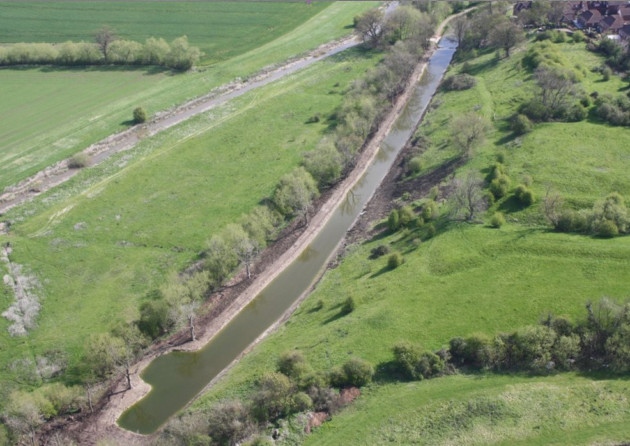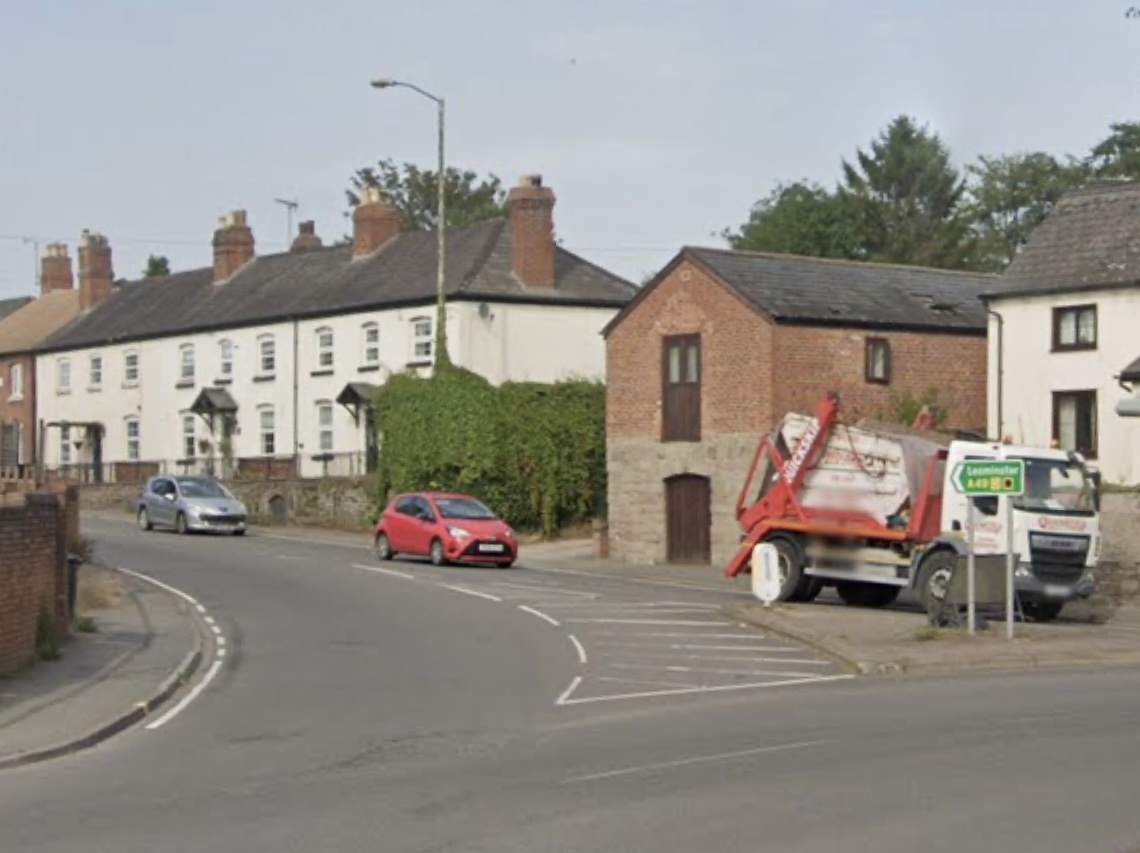The Hereford to Gloucester canal was begun in 1793 and completed by 1845. Unfortunately it was never the commercial success that it was hoped it would be and it closed in 1885, when it was rented to the Great Western Railway (GWR) at a cost of £5,000 per year. The GWR then re-used some of the route to build the Gloucester to Ledbury Railway.
The primary objective of the proposers of the Hereford and Gloucester Canal was to transport coal from the pits near Newent, in the hope that Hereford would benefit from cheaper coal. It was not until 1790 that work was begun and the route was surveyed by Josiah Clowes. In 1793 the necessary Act of Parliament was obtained and the money raised. At this point Hugh Henshall was called in to re-survey the route and he proposed moving it closer to Newent, through some more difficult terrain, which would avoid having to build a three mile branch section. The plan was agreed but it produced no great advantages.
The canal was started at Over in Gloucestershire in 1793. The first priority was to complete the route to Ledbury but the greatest obstacle on this section proved to be the 1 ¼ mile Oxenhall Tunnel. Up to 20 shafts were sunk into the line of the tunnel so that continuous gangs of navvies could work on it, but there was a major problem caused by water running into the tunnel and steam engines had to be brought in to help pump it out.
By 1798 the canal had been completed as far as Ledbury, with a total of 13 locks, but the budget had been overspent and for the next 50 years the route terminated at Ledbury. South of the Oxenhall Tunnel was a short branch intended to serve the Newent coalfield, but a few years later both branch and coalfield were out of use. William Maysey was appointed manager at Ledbury for £30 a year and under him trade continued to trickle along the route into the 19th century. In 1837 Stephen Ballard, an engineer working for the Hereford and Gloucester Canal, took over from Maysey and surveyed the proposed canal extension to Hereford.
His enthusiasm and determination made him the right man for the job and in 1837 work on the remainder of the route began, at an estimated cost of £76,000. At Ashperton there was to be a deep-cut tunnel and a cutting from the River Frome, which would provide the water supply for the canal.
By December 1838, £18,000 worth of shares had been subscribed to for the Herefordshire and Gloucester Canal and in the following June 400,000 bricks were ordered from Stephen Ballard’s brother Robert, who had a brickyard nearby.
In 1839 the Act of Parliament necessary for the completion of the canal passed through the House of Lords without opposition. This enabled the canal builders to raise £50,000 by mortgage and £45,000 in shares. In order to raise the £45,000 capital needed 2,250 shares were offered at £20 each and purchasers were to receive 7.5% of the revenue of the canal. Ballard himself bought 20 shares in total.
Excavation of the Herefordshire section of the canal began on 17th November 1839. By April 1840, 500 men were employed at Prior’s Court embankment on the Hereford side of Ledbury, and on 22nd February 1841 the first boat-load of coal arrived at Bye Street in Ledbury, having climbed the rise from the Ross Road into the centre of the town, an increase of 60ft overcome by a series of locks. The canal was now almost completed as far as Prior’s Court and work had begun on the shafts for Ashperton Tunnel, which was to be 400 yards long.
Ashperton Tunnel
So determined was Stephen Ballard to complete Ashperton Tunnel in as little time as possible that he set up home not far from the site. He built himself a house of dry bricks with only a few mortar courses so that he could be on hand to supervise the works at all hours.
The major problem with the construction of the tunnel was keeping the shafts free of water and the dangerous nature of the work due to threat of landslides and flooding. One night Stephen Ballard stayed up until 1am with a boy who had fallen 60ft down one of the tunnel’s shafts.
The tunnel was often unstable, and to solve this problem it was lined with brick and stone throughout. The waters from the River Frome, needed to fill the canal section around Ashperton Tunnel, were legalised in November 1841 and on 20th August 1842 the Frome waters were let into the canal, which at that time had been nearly empty all the way to Gloucester. To celebrate the event two barrels of cider were bought for the navvies, which they rapidly proceeded to drink.
Ashperton Tunnel had created problems and Ballard was forced to admit that the cost had far exceeded the estimates. He travelled to Birmingham in the hope of borrowing an extra £13,000, but returned empty handed on the newly-opened railway, remarking on its great comfort and reliability.
Too little too late
In January 1843 the wharf at Castle Frome was in use, the development of trade brought capital into the area and soon a weekly passenger boat to Ledbury Market was being well used. One year later a banquet was held in the City Arms (Barclays Bank) in Hereford to mark the opening of the canal to Withington, four miles outside the city. In May 1845 the canal basin at Hereford was filled with water but the momentous event was not celebrated by one single spectator. The Hereford to Gloucester canal had arrived too late, for the mid 1800s were already the years of the railway.
In fact no sooner had the canal route opened up in Hereford than the West Midland Railway offered to buy it, but their offer eventually came to nothing and as the railway was not to reach Hereford until 1853 the canal company was forced to try and make the canal pay its way.
The final nail in the coffin for the canal was the proposal for the Hereford to Worcester Railway in 1860, which provided great competition to the canal. The canal owners accepted their fate and in 1863 leased the canal to the Great Western Railway, who planned to close it and use the Ledbury to Gloucester section to build a railway. The GWR did not do this straight away but continued to keep a trade in coal, timber, stone and bricks travelling on the canal. In 1881 construction of a railway southwards from Ledbury was begun and in 1885 the route was opened to the public. The Ledbury to Hereford section of the canal remained but without the rest of the route to Gloucester it gradually fell out of use.
Spotting the remains
Many people have since described the Hereford and Gloucester Canal as “unrealistic and optimistic”, and much of the 18th century construction was destroyed by the railway in the 19th century. In Hereford itself there is little to see but elsewhere along the route many of the wharf buildings still exist. Standing at the city’s railway station it is hard to imagine the boats, buildings and wharves that made up this terminus. At the north end of Widemarsh Street is a bridge which once crossed the canal and the ¼ mile Aylestone Tunnel (Historic Environment Record number 30754, grid reference SO 516 416) in the Holmer Trading Estate still exists.
Taking the A4103 Worcester road from Hereford it is possible to see some of the remnants of the canal. About eight miles out of Hereford there is a road to Monkhide, a small hamlet, where the road crosses the canal twice. One of the bridges is a skew bridge, which David Bick describes as a “little gem of civil engineering” (David Bick, The Hereford & Gloucester Canal,The Oakwood Press, 1994, p. 43). There are also wharf cottages to the north of the first bridge. To the east of the second bridge is a feature that is something of a surprise – a wide stretch of the Hereford and Gloucester Canal that remains fully watered and possibly navigable. Unfortunately it is only a short stretch, which is soon cut off where the bed has been filled in and planted with trees.
Returning to the main road at the Newtown Crossroads, take the road heading south-east. At Stretton Grandison take the small road leading to Yarkhill and ¼ mile along Stretton Grandison Bridge crosses the canal course across the fields. From the school in Ashperton it is possible to follow the road opposite to the Ashperton Tunnel (HER number 30727). The tunnel is 400 yards long and still impressive. Here the canal bed is also crossed by two bridges, and at the mouth at one end is Tunnel House (HER number 30726).
Follow the road to the A4154, and turn south towards Ledbury. At Staplow you will find a wharf house and the remains of the canal embankment behind Priors Court. From here the canal heads southwards into Ledbury, where it used to run parallel to the A417. At the time of the canal there were six locks and a wharf at Bye Street. Later the route of the canal in Ledbury was taken over by the railways and from Ledbury to Dymock, in Gloucestershire, much of the path of the canal has been obscured by railway tracks. Just south of Dymock the railway bends away westwards leaving the Oxenhall Tunnel (the cause of much expense and trouble) untouched.
(Information taken from David Bick, The Hereford & Gloucester Canal, The Oakwood Press, 1994)
[Original author: Miranda Greene, 2003]




